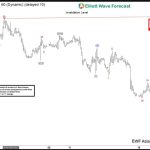In today’s markets, traders clearly believe that risk IS reward…
That’s one reason long-term interest rates are climbing: Investors are absolutely more attracted to equities’ potential upside than to the safety of Treasury bonds.
Bulls think low volatility is a good sign that stocks are poised to go higher. Bears, meanwhile, think markets are disregarding risks and traders are too complacent.
Bond market volatility has indeed been rather low. But it’s nothing compared to what’s happening in stock markets.
The go-to measure of stock volatility is the Chicago Board Options Exchange Volatility Index (VIX), a composite of S&P 500 Index options.
In the first quarter, the VIX – also commonly referred to as the “fear gauge” – was at its lowest level since 1995.
Stocks closed lower four out five trading days last week, rebounded yesterday, but have drifted down again today.
Benchmark yields have also trended a bit lower, with the 30-year U.S. Treasury bond dipping below 3% and the 10-year U.S. Treasury note slipping to 2.31%.
Recent economic indicators haven’t helped the cause…
Nearly two-thirds of U.S. gross domestic product (GDP) is comprised of consumer spending and retail sales accounts for half of that. Needless to say, retail sales is important to the health of our economy.
April retail sales were expected to rise 0.6%. Analysts expected “core” retail sales – which excludes auto and gas sales – to rise 0.4%. Well, sales only rose 0.4% and 0.3% respectively.
Last Friday’s April consumer inflation report also disappointed. The Consumer Price Index (CPI) did rise 0.2% on the month, in line with expectations. But “core” CPI – which excludes food and energy – was up just 0.1%. And the year-over-year core CPI dipped below the Fed’s 2% target.
Last week, the Fed explained away recent disappointing data (the PCE deflator, GDP, and manufacturing weakness) as “transitory,” or a temporary blip of weakness.












Leave A Comment